Since February this year, Mobian, in collaboration with the Municipality of Amsterdam, has been offering everyone who needs to access the city center the opportunity to park their van in the Piet Hein Parking Garage. From there, they can take a Park + Switch vehicle to continue their journey. Clean, fast, and cheaper. Bestelauto wanted to find out if it was more than a concept on paper and gave it a try.
This article has been published by Bert Roozendaal on Bestelauto.nl and was translated into English for the MoLo Hubs website. Read the article in Dutch >>.
Behind Mobian is Sven Snel. He delivers tailor-made sustainable mobility solutions in various European cities and airports. In Amsterdam, there are already about 600 of his (electric) bicycles from 15 locations, mainly used by commuters for the last mile to work. Building on this idea, Sven now aims to facilitate entrepreneurs. His concept: “Drive your bus into the parking garage, transfer your cargo to one of our vehicles, go to your job, and park right in front of the door. Practical, faster, and more flexible.”
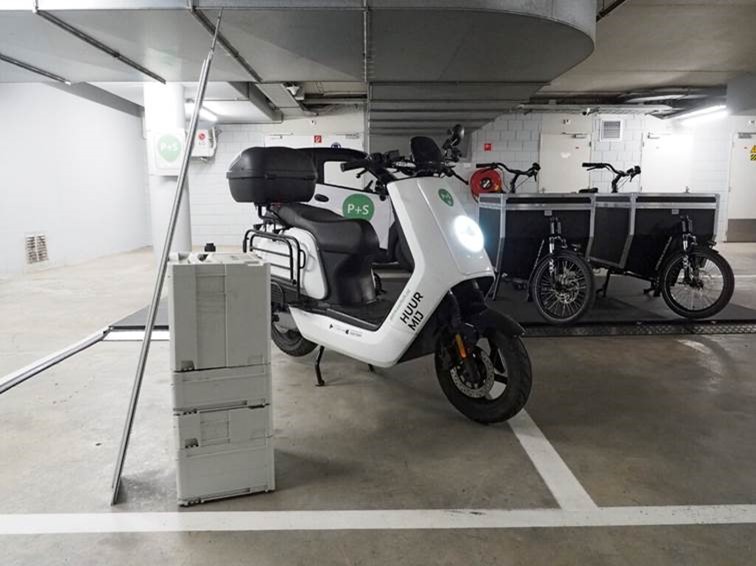
There is some skepticism whether all those boxes will fit on a scooter. On the right, the Urban Arrow cargo bikes.
"Technically, Park + Switch is not much different from what we already do," says Sven. "It's a combination of a vehicle and an app. You register with us on the website and download the app. Then, you reserve a vehicle based on your needs and, consequently, a parking space. If you enter the P-garage with a license plate known to us, the barrier opens automatically. Then, you unlock the reserved vehicle with the app, transfer your cargo, and drive off to your destination."
Free parking
Once there, the big advantage is that you can simply park the scooter and cargobike on the sidewalk in front of the door. "That's free and convenient. The cargo spaces are lockable, and our vehicles are secured with the app and an alarm. The Biro is not allowed on the sidewalk but has a city-wide parking permit. It's small, so you'll find a spot more quickly."
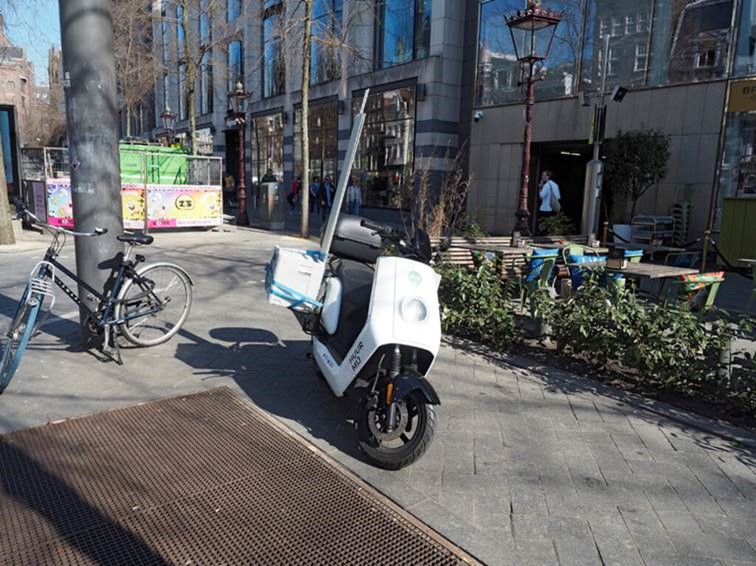
With the scooter, cargo bike and tricycles from Park + Switch, you can park for free anywhere on the pavement.
According to Snel, he is delivering a fantastic inner-city transport system that also solves the Zero Emission Zone issue for many entrepreneurs. "Because your bus stays outside the ZEZ. That’s a bonus, but not even our primary goal. We believe this will enable companies to work faster and more easily in the city center. And not just for service technicians and other service providers with one toolbox and a laptop. We think this also works for painters, carpenters, builders, and renovators."
However, it is still a pilot and a learning experiment. "That’s why we still contact every candidate who reports to us personally. We want to learn more about the market and its needs. We want to see how we can play a mediating role, especially regarding questions like how to get building materials onsite."
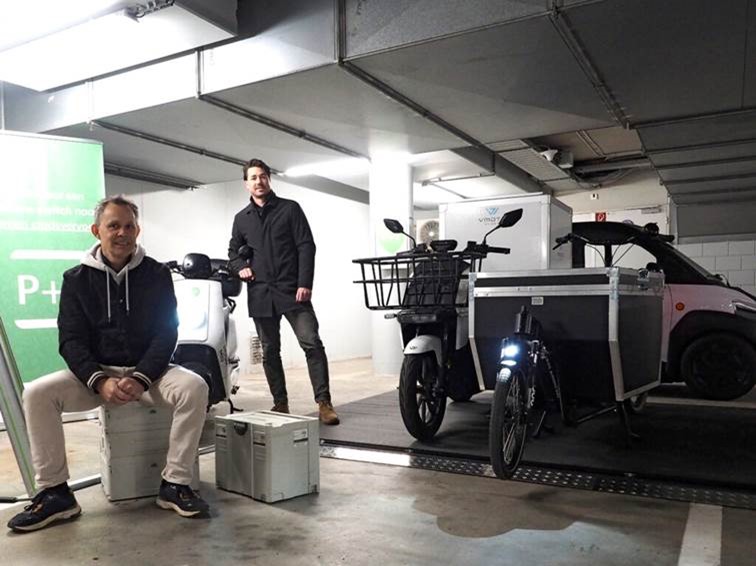
Frank Ebbink, Project Manager for the City of Amsterdam (left), helps facilitate P + S for Sven Snel (right).
Rethinking
Of course, this is already a challenge. "We should also aim to make a difference here," says Snel. "Many construction wholesalers already deliver on-site. We want to be part of that. You can also deliver everything in one go with your van, and then come back later with one of our vehicles and only some hand tools. But you need to be open to doing things differently. It’s a matter of rethinking."
Putting it to the test
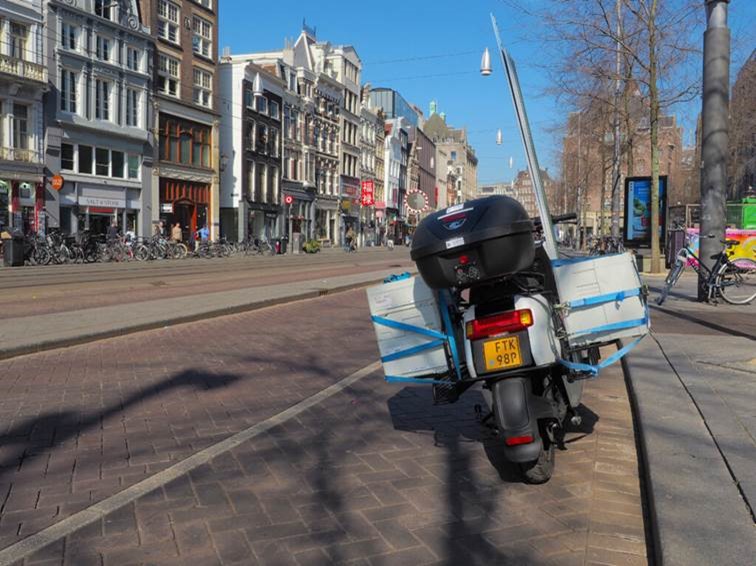
It’s easy to load because of the racks, but we’re 16 percent too wide this way.
At the editorial office, we’re good at thinking differently. So, we decided to put it to the test with some luggage. We stand in the Piet Hein garage with four Festool boxes and two circular saw rulers to see if we can take them into the city center on a scooter.
When we place the boxes next to the scooter, we have some doubts: it looks like a lot. But the Niu has two fold-out racks in addition to its helmet box (with helmet and hairnets). The elastic straps we've brought along make loading straightforward. The phone can be placed in the holder on the handlebars, with the app automatically linking the entered destination to Google Maps. Helmets on, and we're ready to go. The barrier opens smoothly, and a little later, we arrive at the Piet Heinkade.
Actually, we should be on the road with the yellow license plate scooter. But with a maximum of 45 km/h on a double-lane road where the cars race along, we found that very adventurous. So, we took the double cycle path to the traffic light. A lady asks what I am doing. She thinks the heavily loaded scooter is very wide. That feeling crept up on me too. But once in the city itself, that problem disappears. Everywhere along the route to my final destination, Het Rokin, the maximum speed is 30 km/h. I can do that, and so I simply ride wide on the road. Nobody thinks it's crazy or tries to squeeze past me. The ride is really a piece of cake. And fun!
I think that if I, as a handyman with that Niu in front of the door, am also much faster going back and forth to Bouwmaat for that tap or that roll of masking tape I had forgotten - try doing that with your delivery van. The return trip might even be faster. Re-entering the parking garage with the code doesn’t work, but that’s either a new feature or just my clumsiness. The scooter goes back on its dock, where it charges wirelessly via induction. And I drive away in my van without any problems.
Really too wide
But once at home, I looked up how wide a scooter can be, including cargo. Yes: one meter. And I was 1.16 meters. Although I don't think you’ll be checked immediately, it’s not permitted, and you’ll just barely meet an attentive officer along your route. The Niu is therefore better suited for service technicians with one toolbox and possibly a flat Festool box upright on the other side. A ladder can be taken along because a scooter can be 2.50 meters high. Speaking of height: the Piet Hein garage also has a department where you can store your tall van, like a Crafter or Daily.
The Niu is the smallest means of transport. As mentioned, we had it loaded too broadly. But if you’re carrying the equivalent of ten Festool boxes, rulers, and a ladder, for example, you can really manage with the VMoto three-wheel scooter. It’s less maneuverable. The Urban Arrow e-cargo bike is in between, with plenty of cargo space and access to bike paths. The Biro seems to be the least convenient in the city center because of parking limitations. There’s also less in it. And, for now, there is only one hub. For a successful rollout, there should definitely be another one on the south side of the city. But that doesn’t change the fact that ‘we at the editors’ think the test was more than successful. In our opinion, as a painter, service technician, or self-employed person, you can really do your job in the heart of Amsterdam - if you’re willing to ‘rethink’ a bit.
The question remains: what do entrepreneurs think of it? We asked Jan Stoeltie, director of Amsterdam City. He doesn’t seem to be a unanimous supporter. “Think of the city as an ecosystem with neighborhoods that each require their own approach regarding mobility, accessibility, and quality of life. The quality of the public space also plays a role here. It is, in itself, good to try and get as much traffic out of the city as possible because measurements show that all those inner-city traffic jams are not caused by tourists or occasional drivers. It’s all just local traffic, and something needs to be done about it. Still, I don’t think Park + Switch is the only solution. But, if we’ve learned anything from recent transport experiments, it’s that there is no single answer. So, this idea can also contribute to a better business climate - for example, because more entrepreneurs and residents are noticing that many service companies no longer even want to go into the city: too difficult, too expensive, too complicated.”
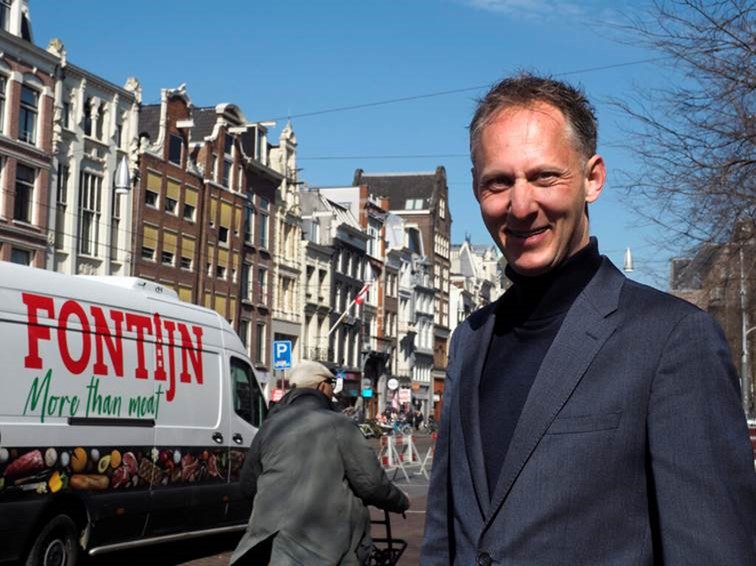
Jan Stoeltie: "Fewer and fewer companies want to operate in the city. Perhaps P + S offers a solution here."
Cheaper
Park + Switch could possibly be part of that solution. Besides improved mobility, the system also seems surprisingly affordable in comparison. Park + Switch offers three subscription types: “The Flex membership chip, where you are a member but have to reserve a vehicle each time; the Fixed membership, which allows you to use the same vehicle for a period; and a short-term arrangement for occasional use. According to Snel, a Flex Membership for a scooter, including parking space, for five days a week, costs €305 per month. “Parking your van for a week costs more!” says the mobility provider. “If you can find a parking spot, that is. That cost is passed on to the customer, but ultimately it adds to the job’s expenses.”
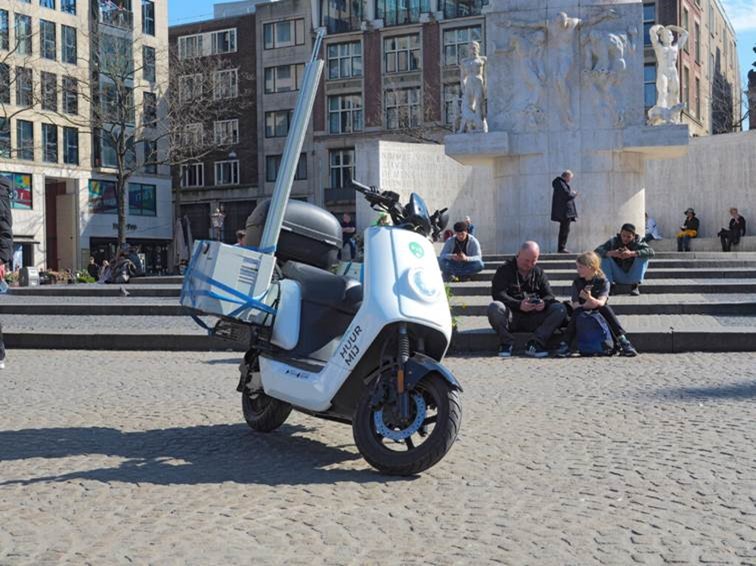
Source: Bert Roozendaal | Bestelauto.nl
